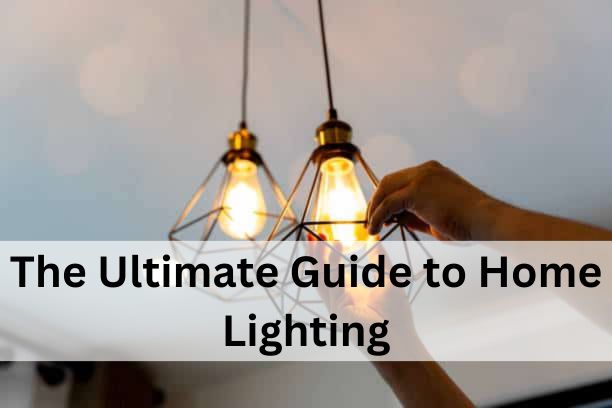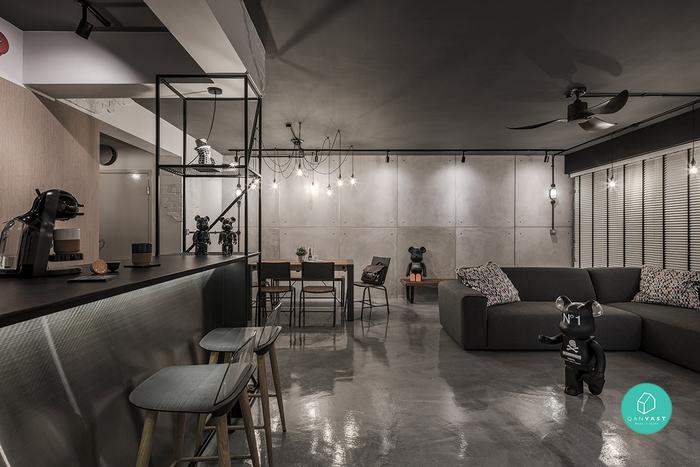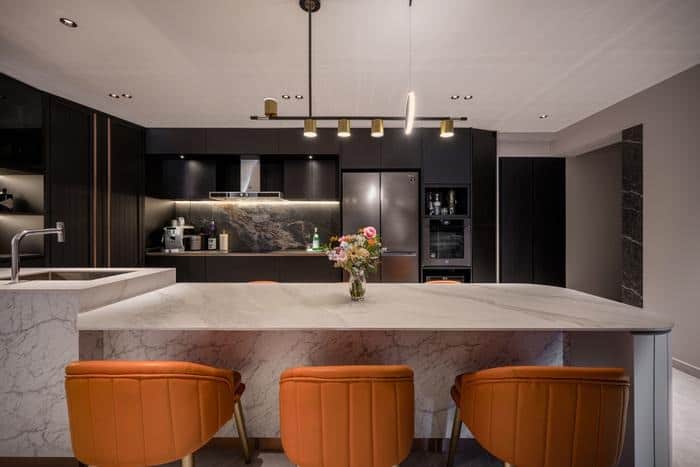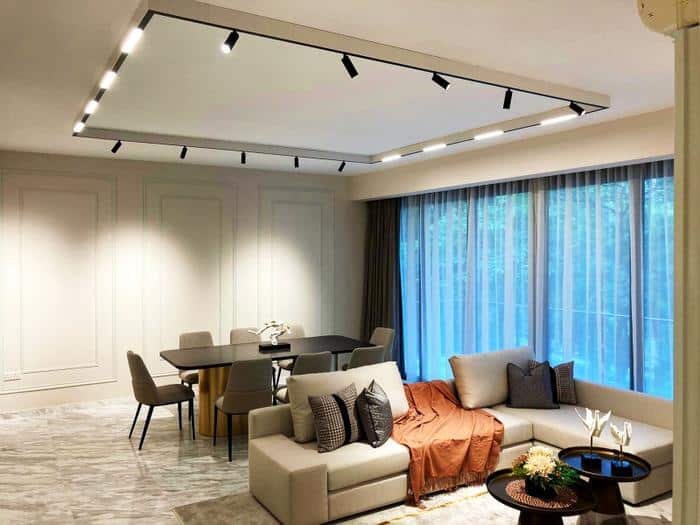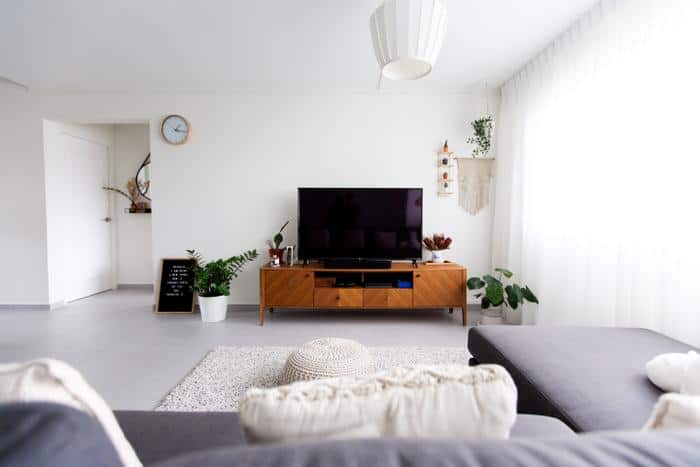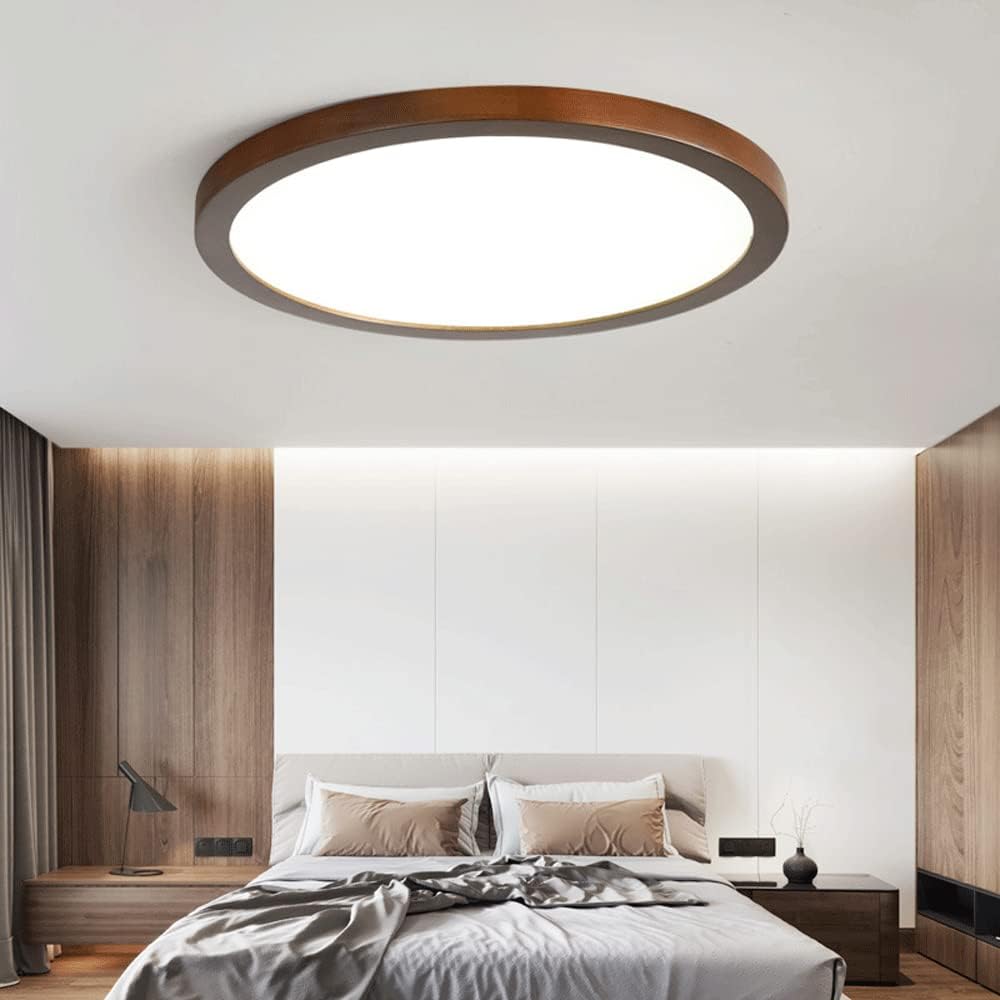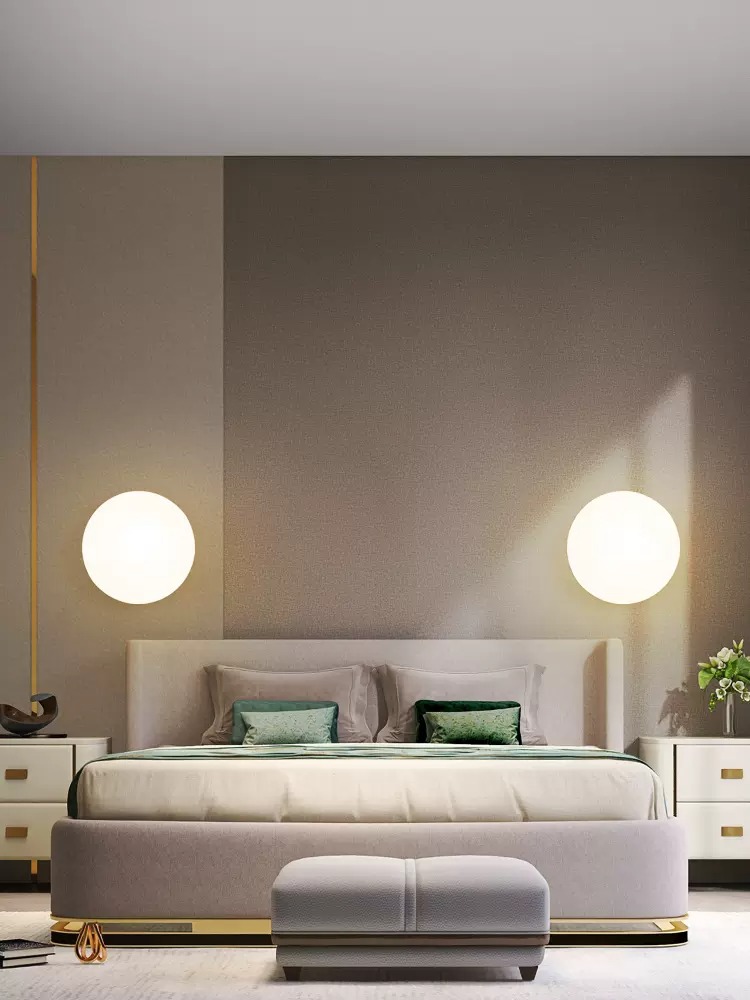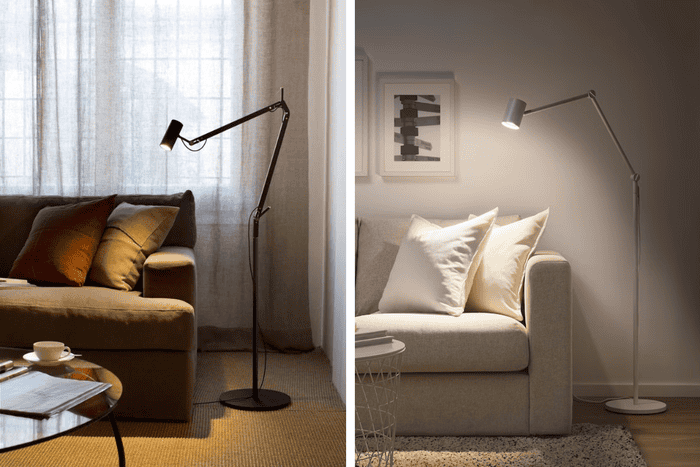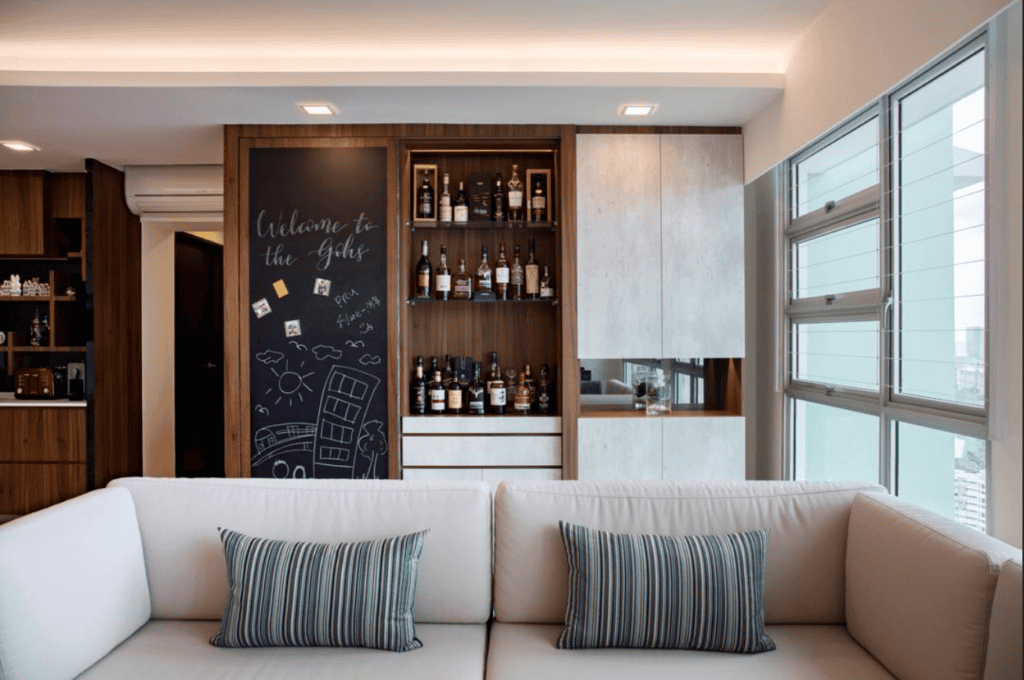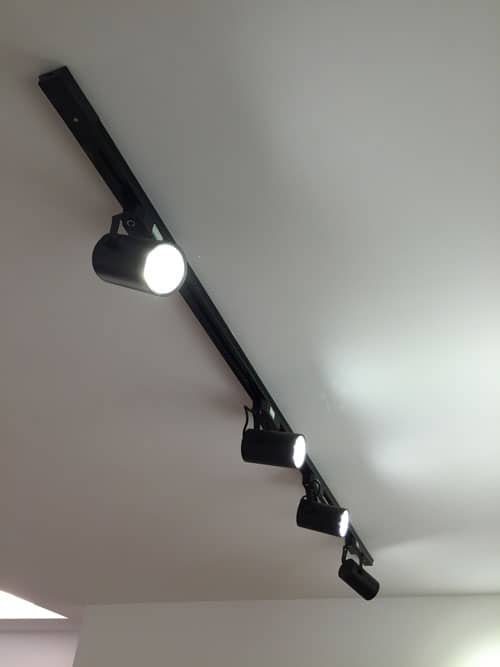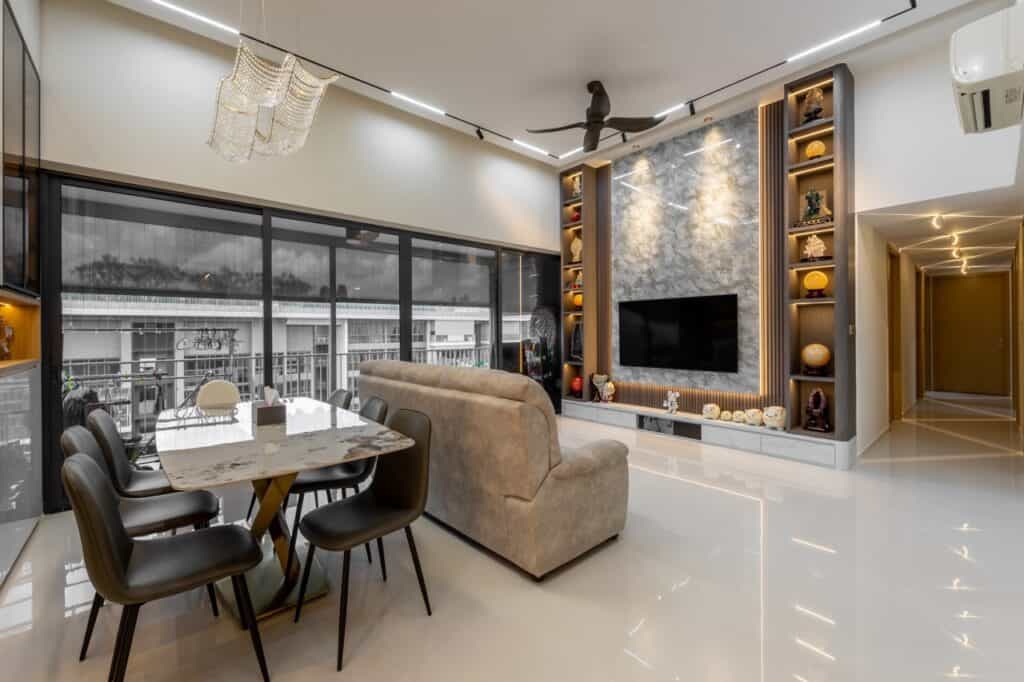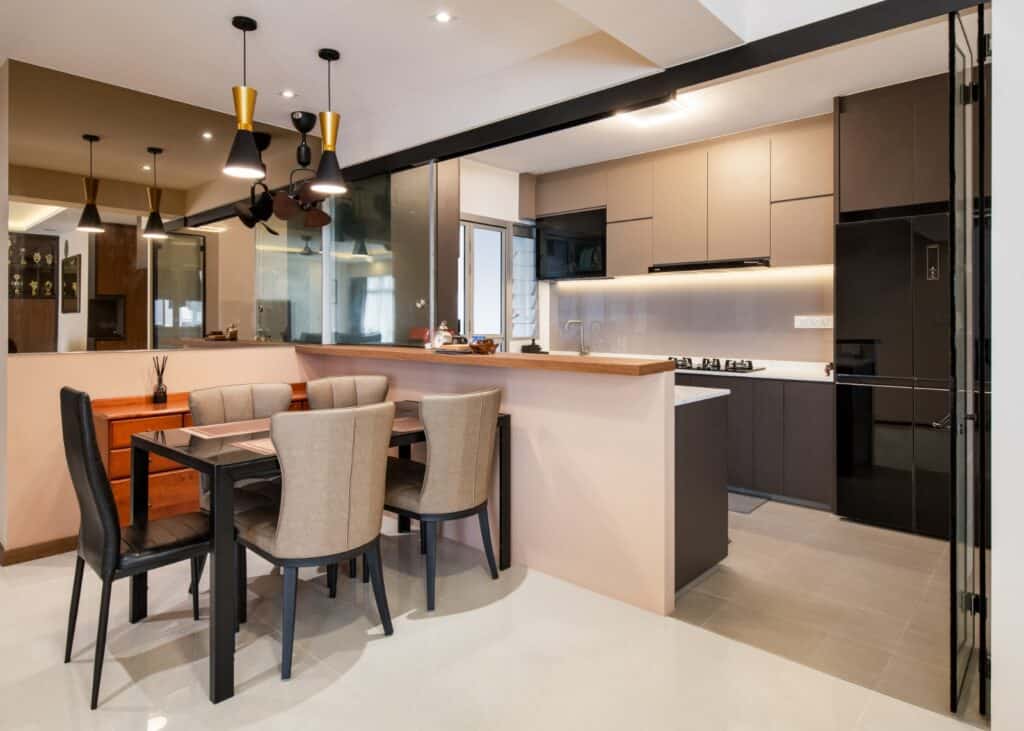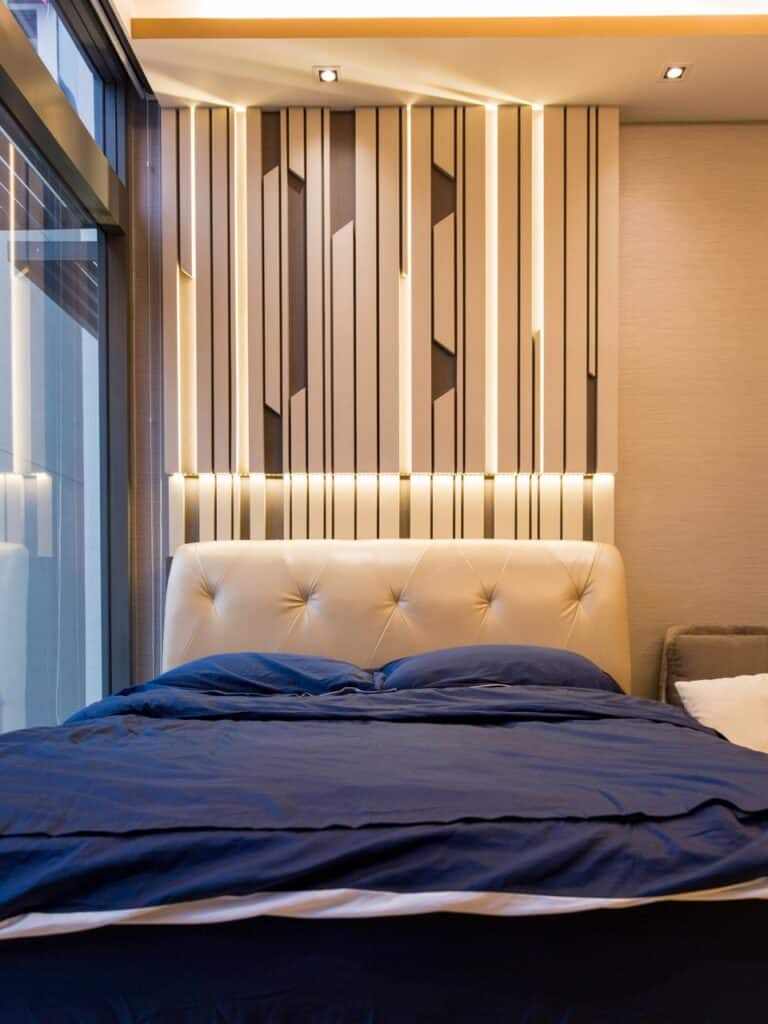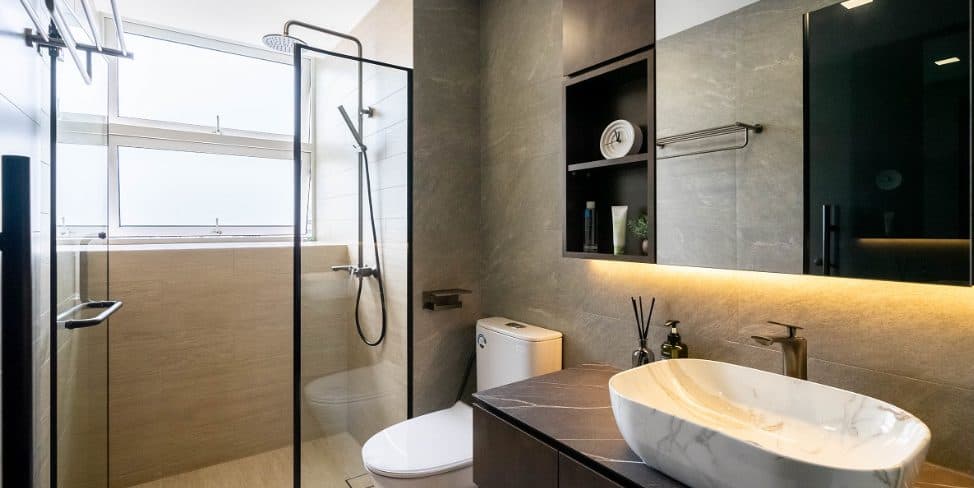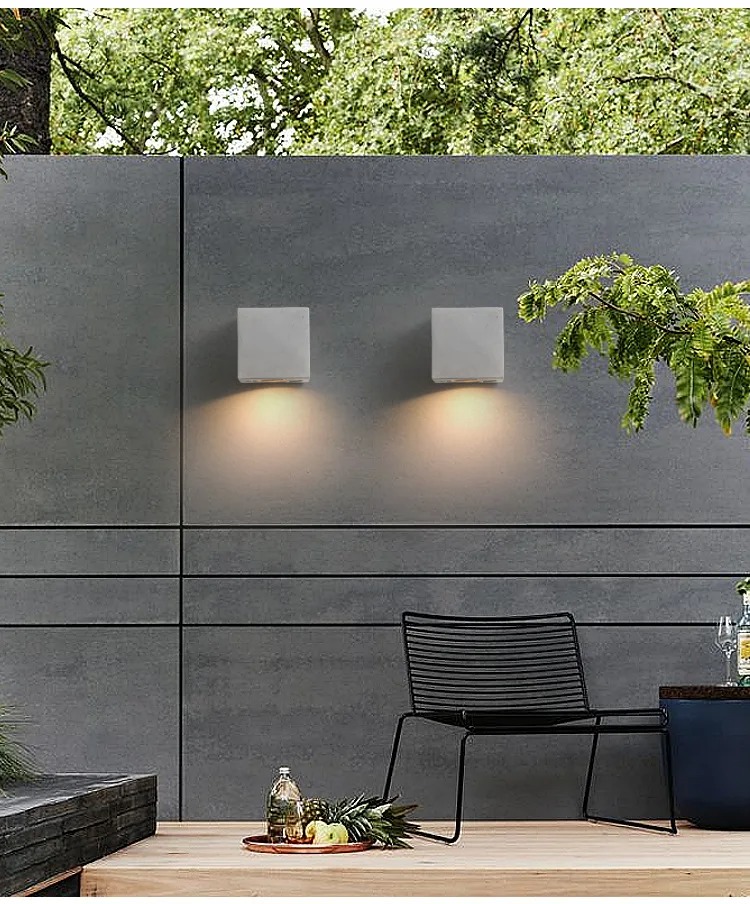Lighting is one of the most critical elements in any home, serving multiple purposes beyond mere illumination. It not only brightens up spaces but also plays a crucial role in setting the mood, enhancing decor, and improving the functionality of various areas. Effective lighting design can transform a dull room into a lively, welcoming space or create a calming atmosphere perfect for relaxation. Whether you are building a new home, renovating, or simply updating your lighting scheme, it is essential to understand the different types of home lighting and how they contribute to both aesthetics and functionality. This comprehensive guide will walk you through everything you need to know to ensure your home is well-lit, stylish, and energy-efficient.
The Importance of Home Lighting
Enhancing Interior Design with Lighting
Lighting is a fundamental component of interior design, influencing how a space looks and feels. It can highlight architectural features, accentuate textures and colors, and create various moods and atmospheres. For instance, strategically placed lights can make a small room appear more spacious or a large room feel cozier. By layering different types of lighting—such as ambient, task, and accent lighting—you can create a dynamic and visually appealing environment. The right lighting design can elevate the aesthetic appeal of your home, making it not just functional but also a reflection of your style and personality.
Psychological Impact of Lighting
The psychological effects of lighting on mood and mental health are profound and well-documented. Natural light, for example, is known to enhance mood, increase energy levels, and improve overall well-being. On the other hand, harsh or inadequate lighting can lead to eye strain, fatigue, and even depression. Soft, warm lighting can create a sense of relaxation and comfort, making it ideal for bedrooms and living areas. Understanding the psychological impact of different lighting types allows you to create spaces that not only look good but also feel good, promoting a sense of well-being and comfort in your home.
Functional Necessities of Home Lighting
Beyond its aesthetic and psychological impacts, lighting is essential for the practical functionality of your home. Proper lighting ensures that you can perform everyday tasks safely and efficiently. Inadequate lighting can lead to accidents or make activities like reading, cooking, and grooming more challenging. Moreover, lighting plays a role in influencing our body’s circadian rhythms, affecting sleep patterns and overall health. Each room in your home requires a specific type of lighting tailored to its use, ensuring that every activity—from working at your desk to relaxing in your living room—is adequately supported.
Types of Home Lighting
Ambient Lighting
Image Credit: Qanvast / Posh Home
Ambient lighting serves as the primary source of illumination in a room, providing a comfortable level of brightness without glare. It is essential for establishing the overall mood and allowing safe navigation throughout the space. Common fixtures for ambient lighting include ceiling-mounted lights, chandeliers, and recessed lighting, which can be used individually or combined for a more layered effect. The key to effective ambient lighting is achieving a balance that neither overwhelms nor underwhelms the space, creating a harmonious backdrop for other lighting layers and room elements.
Task Lighting
Image Credit: Qanvast / SHE Interior
Task lighting is designed to illuminate specific areas where focused light is needed for activities such as reading, cooking, or working. It is typically brighter than ambient lighting and directed to eliminate shadows, reducing eye strain and enhancing visibility. Examples include desk lamps, under-cabinet lights in kitchens, and pendant lights over workspaces. Effective task lighting not only improves functionality but also enhances comfort, making it easier to perform detailed tasks with precision and ease. It’s an indispensable component of any well-designed lighting plan, ensuring that each area of your home is equipped for its intended use.
Accent Lighting
Image Credit: Qanvast / Light Makers
Accent lighting adds drama and interest to your home by highlighting specific objects, architectural features, or areas, creating focal points within a room. This type of lighting is often used to draw attention to artwork, plants, or textured walls, adding depth and dimension to the space. Wall sconces, track lighting, and spotlights are common choices for accent lighting. By carefully placing accent lights, you can create a sense of balance and hierarchy, guiding the eye and enhancing the visual appeal of your interior design. Accent lighting is an artistic tool that, when used effectively, can transform the ordinary into the extraordinary.
Natural Lighting
Image Credit: Qanvast / Forefront Interior
Natural lighting, also known as daylighting, utilizes sunlight to illuminate your home, offering both aesthetic and health benefits. Large windows, skylights, and glass doors can flood interiors with natural light, reducing the need for artificial lighting and lowering energy costs. Beyond its economic advantages, natural lighting has been shown to boost mood, productivity, and overall well-being. It can make colors appear more vibrant and spaces feel more open and inviting. Maximizing natural light in your home not only enhances visual comfort but also connects your living spaces to the natural environment, creating a harmonious and uplifting atmosphere.
Choosing the Right Light Fixtures
Ceiling Lights
See this product: Amanrek Wooden Round Flush Mount Ceiling Light
Ceiling lights are a versatile and essential part of any home’s lighting plan, providing general illumination that covers the entire room. Available in various styles—including flush mounts, semi-flush mounts, chandeliers, and pendant lights—ceiling fixtures can be chosen to match the decor and functional needs of each room. When selecting ceiling lights, consider the size of the room, ceiling height, and the type of ambiance you want to create. For example, a grand chandelier can serve as a focal point in a large dining room, while flush-mounted fixtures are more suitable for low-ceilinged spaces. The right ceiling light can tie together your room’s design while providing effective lighting coverage.
Wall Lights
See this product: Ingvild Round Frosted Globe Wall Light
Wall lights, such as sconces and wall-mounted fixtures, offer both practical and decorative benefits. They are perfect for adding extra lighting in hallways, bathrooms, and bedrooms, providing ambient or accent lighting without occupying floor or table space. Wall lights can also be used to highlight artwork or architectural details, creating visual interest and enhancing the room’s decor. When choosing wall lights, consider the placement and height to ensure they provide the desired effect without causing glare or disrupting the room’s flow. The versatility of wall lights makes them a valuable addition to any lighting plan, enhancing both functionality and style.
Floor and Table Lamps
Image Credit: Qanvast / Marset
Floor and table lamps are portable lighting options that add versatility and charm to your home. They can serve multiple functions, from providing task lighting in a reading nook to adding ambient light in a living room. Their portability allows you to move them around as needed, adapting to changing lighting requirements or rearrangements in furniture. Choose lamps that complement your interior design and provide adequate lighting for their intended purpose. For example, a tall floor lamp can brighten a dark corner, while a stylish table lamp can serve as a focal point on a side table. The right lamp can elevate the aesthetic appeal of a room while enhancing its functionality.
Recessed Lighting
Image Credit: Qanvast / The Orange Cube
Recessed lighting, or downlights, are fixtures installed into the ceiling, creating a sleek and unobtrusive look. They are ideal for providing general illumination or highlighting specific areas such as kitchen counters or artwork. The key to effective recessed lighting is proper spacing and placement, ensuring even illumination without creating dark spots or excessive glare. Recessed lights can be used alone or in combination with other types of lighting to create a layered and dynamic lighting scheme. They are particularly well-suited for modern and minimalist interiors, where clean lines and a clutter-free look are desired.
Track Lighting
See this product: LED Tracklight Ceiling Spotlight
Track lighting consists of a series of adjustable light fixtures mounted on a track, allowing you to direct light precisely where it’s needed. This flexibility makes it an excellent choice for both ambient and accent lighting in living rooms, kitchens, and galleries. Track lighting is ideal for illuminating artwork, workspaces, or areas that require frequent changes in lighting direction. When selecting track lighting, consider the size of the space and the type of bulbs used, as they can impact the overall brightness and energy efficiency. The versatility and modern appeal of track lighting make it a popular choice for contemporary homes.
Lighting for Different Rooms
Living Room Lighting
Image Credit: Home Match / 17 Skypark Residence
The living room is a multifunctional space that often serves as the heart of the home, making a thoughtful lighting plan essential. A combination of ambient, task, and accent lighting is usually required to accommodate different activities, from reading and watching TV to entertaining guests. Ceiling lights provide general illumination, while table lamps and floor lamps can offer focused lighting for reading or other tasks. Wall sconces or track lighting can be used to highlight artwork or architectural features, adding depth and character to the room. The key is to create a balanced lighting scheme that enhances both the functionality and aesthetics of the space.
Kitchen Lighting
Image Credit: Home Match / Yishun Street
Kitchens are bustling workspaces that require bright, focused lighting for food preparation and cooking. A well-designed kitchen lighting plan combines ambient lighting, such as recessed ceiling lights, with task lighting, like under-cabinet lights and pendant lights over islands. Dimmers can be added to adjust the light levels for different activities, from cooking and cleaning to dining and entertaining. Adequate lighting not only improves functionality but also enhances safety, reducing the risk of accidents. The right kitchen lighting can transform your cooking space into a well-lit, efficient, and inviting environment where family and friends can gather comfortably.
Bedroom Lighting
Image Credit: Home Match / Watercove Ville
Bedroom lighting should create a serene and relaxing atmosphere conducive to rest and rejuvenation. Soft ambient lighting from ceiling fixtures can be complemented by bedside lamps for reading or accent lights to highlight artwork and architectural details. Consider using dimmers to adjust the light levels, allowing for a gentle transition from bright light during waking hours to a softer glow in the evening. The right lighting can help create a cozy and intimate environment, enhancing the overall comfort and functionality of your bedroom. Choose fixtures that not only provide adequate illumination but also reflect your personal style and preferences.
Bathroom Lighting
Image Credit: Renopedia / Dots N’ Tots Interior
Bathrooms require a combination of bright, even lighting for grooming and softer lighting for relaxation. Overhead ceiling lights provide general illumination, while wall-mounted fixtures on either side of the mirror offer shadow-free lighting ideal for tasks like shaving or applying makeup. For showers and bathtubs, consider installing moisture-resistant fixtures to ensure safety and durability. Adequate bathroom lighting can prevent accidents and improve the overall usability of the space. Incorporate dimmable lights or smart lighting solutions to create a spa-like atmosphere, perfect for unwinding after a long day.
Outdoor Lighting
See this product: Ernarj Rectangular Twin Shine Cement Wall Light
Outdoor lighting enhances the safety, security, and aesthetics of your home’s exterior. Path lights illuminate walkways and driveways, reducing the risk of trips and falls. Wall lights or floodlights provide security by deterring potential intruders, while landscape lighting can highlight trees, shrubs, or architectural features, creating a welcoming and visually appealing environment. Solar-powered lights are an eco-friendly option, offering easy installation and minimal maintenance. The right outdoor lighting can transform your yard into an inviting space for evening gatherings or simply enjoying the outdoors, while also enhancing the overall curb appeal of your home.
Energy-Efficient Lighting Solutions
LED Lighting
LED (Light Emitting Diode) lighting has revolutionized the lighting industry with its energy efficiency, longevity, and versatility. LEDs consume significantly less power than traditional incandescent or fluorescent bulbs, produce minimal heat, and have a lifespan of up to 25,000 hours or more. Available in various shapes, sizes, and color temperatures, LED bulbs can be used in virtually any lighting fixture, from recessed downlights to decorative chandeliers. They are also available in dimmable and smart versions, offering additional control and customization options. By switching to LED lighting, you can significantly reduce your energy consumption and maintenance costs while enjoying a high-quality lighting experience.
CFLs vs. LEDs
Compact Fluorescent Lamps (CFLs) and LEDs are both energy-efficient alternatives to incandescent bulbs, but there are key differences between them. CFLs use about 75% less energy than incandescent bulbs and last up to 10 times longer, but they contain small amounts of mercury, which requires careful disposal. LEDs, on the other hand, use up to 90% less energy and last up to 25 times longer than incandescent bulbs. They also do not contain hazardous materials, making them safer and more environmentally friendly. While CFLs are cheaper upfront, LEDs offer better long-term savings and performance, making them the preferred choice for most homeowners.
Smart Lighting Systems
Smart lighting systems provide convenience, energy savings, and enhanced control over your home’s lighting. These systems allow you to remotely control your lights using a smartphone app or voice commands, enabling features like scheduling, dimming, and color-changing. Integrating smart lighting with other home automation systems, such as thermostats and security cameras, can further optimize energy use and enhance comfort and security. Smart lighting systems are particularly useful for creating different lighting scenes for various activities, such as watching a movie, hosting a dinner party, or winding down before bed. Investing in smart lighting can make your home more adaptable, efficient, and enjoyable.
Solar-Powered Lighting
Solar-powered lighting is an excellent choice for outdoor spaces, providing sustainable and cost-effective illumination. These lights harness energy from the sun during the day and store it in rechargeable batteries for use at night. Solar-powered lights are available in various styles, from pathway lights to security floodlights, and are easy to install without the need for wiring. They are also low maintenance, with most models requiring only occasional cleaning and battery replacement. By choosing solar-powered lighting, you can reduce your energy costs and environmental impact while enhancing the beauty and safety of your outdoor areas.
Lighting Design Tips
Layering Light
Layering light involves using a combination of ambient, task, and accent lighting to create a balanced and versatile lighting scheme. This approach ensures that each area of a room is adequately lit for its intended purpose while enhancing the room’s overall aesthetics. For example, in a living room, you might use recessed ceiling lights for general illumination, table lamps for reading, and wall sconces to highlight artwork. Layering light allows you to create different moods and atmospheres, making your space more adaptable and functional. By carefully planning your lighting layers, you can achieve a harmonious and visually appealing environment.
Choosing the Right Bulbs
Selecting the right bulbs is crucial for achieving the desired lighting effect in each room. Factors to consider include wattage, color temperature, and the Color Rendering Index (CRI). LED bulbs are a popular choice due to their energy efficiency and versatility. They are available in a range of color temperatures, from warm white (2700K-3000K) to cool white (4000K-5000K), allowing you to customize the ambiance of each room. The CRI indicates how accurately a light source displays colors, with a higher CRI (above 80) recommended for better color perception. Choosing the right bulbs can enhance both the functionality and aesthetics of your home.
Dimmers and Controls
Dimmers and lighting controls provide flexibility in adjusting light levels to suit different activities and moods. Installing dimmer switches allows you to reduce brightness when full illumination is not needed, saving energy and extending the lifespan of your bulbs. Smart dimmers offer additional features, such as remote control and integration with home automation systems, providing even greater convenience and customization. Dimmers are particularly useful in areas like dining rooms, living rooms, and bedrooms, where different lighting levels are often required. By incorporating dimmers into your lighting plan, you can create a more adaptable and energy-efficient home environment.
Color Temperature and CRI
Color temperature, measured in Kelvin (K), affects the ambiance of a room and can influence mood and perception. Warm light (2700K-3000K) creates a cozy, inviting atmosphere, making it ideal for living rooms and bedrooms. Cool light (4000K-5000K) is energizing and better suited for task-oriented spaces like kitchens and offices. The Color Rendering Index (CRI) measures how accurately a light source renders colors, with a higher CRI providing more vivid and true-to-life colors. A CRI above 80 is recommended for most home applications. Understanding these factors can help you choose the right lighting for each room, enhancing both functionality and aesthetics.
Innovative Lighting Trends
Smart Lighting
Smart lighting technology is revolutionizing the way we light our homes. With features like remote control, voice activation, and automation, smart lighting systems offer unparalleled convenience and customization. You can adjust brightness, change colors, and set schedules with a few taps on your smartphone or a simple voice command. Smart lighting can also be integrated with other smart home devices, such as thermostats and security cameras, creating a seamless and connected living environment. As technology continues to advance, smart lighting systems are becoming more affordable and accessible, making it easier than ever to transform your home’s lighting.
Eco-Friendly Lighting
Eco-friendly lighting solutions focus on reducing energy consumption and minimizing environmental impact. LED bulbs and solar-powered lights are popular choices due to their energy efficiency and long lifespan. In addition, there is a growing trend towards using sustainable materials in lighting fixtures, such as recycled glass, bamboo, and biodegradable plastics. These eco-friendly options not only reduce your carbon footprint but also contribute to a healthier and more sustainable home environment. By choosing eco-friendly lighting solutions, you can enjoy beautiful, efficient lighting while supporting environmental conservation.
Artistic and Custom Lighting Fixtures
Artistic and custom lighting fixtures allow homeowners to express their personal style and add a unique touch to their decor. From hand-crafted chandeliers to bespoke sconces, these fixtures can serve as statement pieces and focal points in any room. Custom lighting can be designed to complement your home’s architecture and interior design, creating a cohesive and harmonious look. Collaborating with local artisans or designers can result in one-of-a-kind pieces that reflect your taste and personality. Artistic lighting fixtures are not just functional but also works of art that can elevate the aesthetic appeal of your home.
Conclusion: Illuminate Your Home with Style and Efficiency
Lighting is a vital aspect of home design that extends far beyond functionality. It shapes the ambiance, enhances decor, and impacts the overall experience of your living space. By understanding the different types of lighting, choosing the right fixtures, and implementing energy-efficient solutions, you can create a well-lit, stylish, and comfortable home environment. Whether you’re updating a single room or designing an entire house, this guide provides the knowledge and inspiration you need to illuminate your space with style and efficiency. For all your lighting needs, visit Screed to explore a wide selection of high-quality lighting options that will help you transform your home.
Incorporate the principles and tips outlined in this guide to make informed decisions about your home lighting. From selecting the right fixtures and bulbs to exploring innovative lighting trends, every choice you make can enhance the beauty and functionality of your home. Embrace the potential of smart lighting systems and sustainable solutions to create a living environment that is both aesthetically pleasing and environmentally responsible. By paying attention to the details and considering the unique needs of each space, you can achieve a harmonious balance of light and design, reflecting your personality and enhancing your overall well-being. For premium lighting solutions that cater to every style and budget, visit Screed and discover how you can illuminate your home with care and creativity. Enjoy the many benefits that come with a thoughtfully lit space and elevate your living environment with the perfect lighting choices.
See Related Articles:
Ambient Lighting: Setting the Mood in Your Home
Task Lighting: Illuminating Your World
Accent Lighting: The Sparkle in Your Home
Outdoor Lighting: Illuminating Your Outdoor Oasis
Smart Lighting: Illuminate Your World with Intelligence
Lighting for Different Rooms: A Comprehensive Guide
Lighting for Different Styles: Illuminating Your Aesthetic
Lighting for Different Occasions: Setting the Mood
Lighting and Psychology: How Light Affects Your Mood and Well-being
